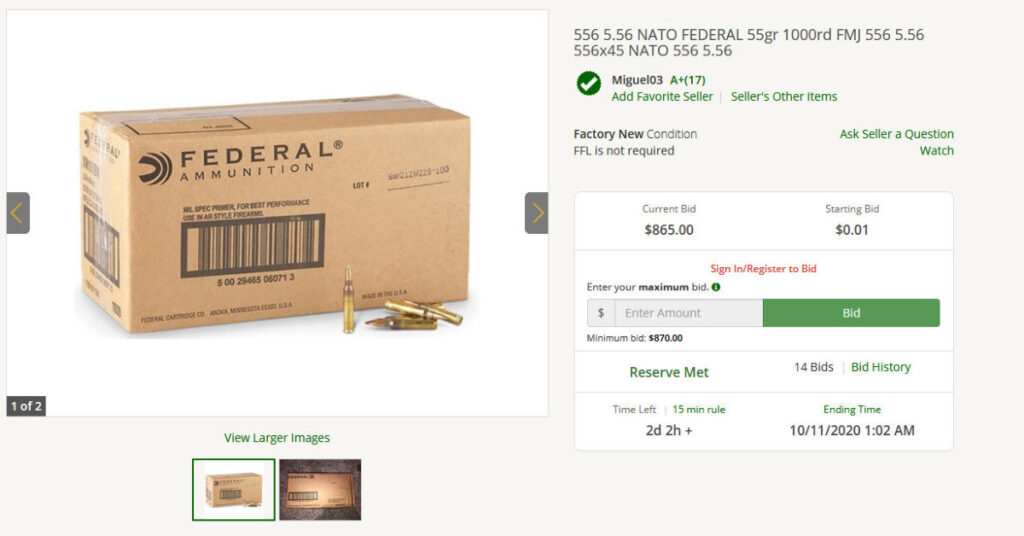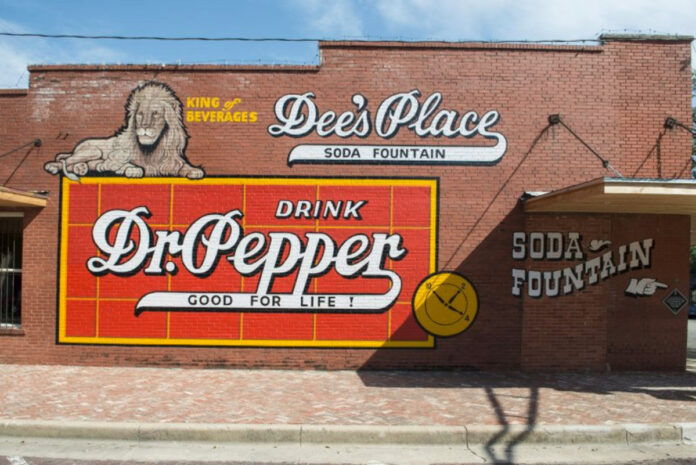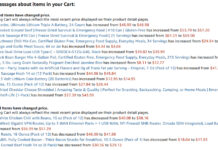About the time I was in high school, the Dr. Pepper slogan was “Wouldn’t you like to be a Pepper too?” Add the letter “R,” and you have a more important question, because in 2020, who wouldn’t have enjoyed being a prepper?
I think many non-preppers wish they were preppers this year. So many things have gone wrong, starting with the pandemic, moving on to civil unrest and violence, plus miss-guided efforts to defund the police and a resulting increase in the crime and murder rate. It’s a year made for preppers.
For example, at the start of COVID-19, I had the following in storage:
- 144 rolls of toilet paper.
- Plenty of paper towels and soap
- 200 surgical masks in two sizes, several boxes of N95 masks, and hundreds of gloves, some latex, some latex alternatives.
- Several thousand rounds each of 9mm, .40, and .45 caliber ammo. Even more of .22LR and 5.56.
- Multiple firearms.
- Hundreds of books to read.
- Enough food to feed myself and my wife for several years.
While we took advantage of curb-side grocery pick up for fresh fruits, vegetables, and eggs, the various shortages didn’t affect us at all. We did miss junk food and chocolate enough that we bought it, too, and added some to our stash. But we could have lived without it.
Being Prepared Means Worrying Less
Because we were prepared, when the COVID-19 shutdown occurred, we didn’t panic. In fact, we were monitoring the news and reading prepper websites, so we were not caught by surprise and did a last-minute Costco run about a week before things started shutting down.
But the coronavirus pandemic is just one example of how being prepared helps. Here are some other examples from my personal experience:
- When the Tsunami hit Japan and flooded their nuclear plant, we already had potassium iodate on our shelves, as well as a Geiger counter. We didn’t need any of it, but while other people were making panic buys, we relaxed knowing that we were well equipped.
- When an ice storm or hurricane threatens, we have a generator to keep the fridge and freezer running, bottled water on hand, multiple flashlights and battery-powered lamps, and several ways to cook if the power is out.
- When the Sandy Hook school shooting resulted in a shortage of 30-round AR-15 magazines and ammo, I relaxed, knowing that there was no shortage in my home.
- Right now, I am seeing 1,000 round cases of 5.56 sell on GunBroker.com for close to $1,000. I am sitting on cases from 2011 that I bought for $289 each. It’s reassuring to know that I could turn around and sell them for three times that, but it’s even more reassuring to know that I have the ammo on hand.

When congress or presidential candidates threatened to ban guns, I knew I had all the guns I needed. Sure, I may want more guns, but I have enough to protect myself and others, hunt, train, and arm a few friendlies.
For us, prepping means peace of mind. We feel safe, and we offer a safe retreat for family and a few select friends.
It’s Not Too Late to Prep
There is always another disaster, emergency, or event around the corner. That means it is never too late to prep. If you start with the basics, you’ll be better off than you are today.
Start by buying and storing food that does not require refrigeration. Build up this prepper pantry until you have enough to feed your family for a month. Store some water or if you have a natural water source you can access, buy a water filter or purifier that will let you drink that water. Ensure that you have a safe place in which to weather the storm, whether it is physical or metaphorical.

Start by buying and storing food that does not require refrigeration. Build up this prepper pantry until you have enough to feed your family for a month. Store some water or if you have a natural water source you can access, buy a water filter or purifier that will let you drink that water. Ensure that you have a safe place in which to weather the storm, whether it is physical or metaphorical.
There, you’ve completed step one. In step two, put together a first aid kit. It can be a simple “snivel kit” that includes Band-Aids, antibiotic ointment, a pair of tweezers, a thermometer, some Tylenol or Ibuprofen, a decongestant, an anti-diarrheal, and an elastic bandage or two, or it can be a more extensive kit with splints, a CPR mask, pressure bandages, blood stoppers, chest seals, tourniquets and other more advanced life saving devices. That’s up to you.
If you or anyone in your family takes prescription drugs, tuck a week or two worth of pills into your medical kit. If anyone wears corrective eyewear, put your prior pair in this kit in case your glasses break or get lost. A slightly out-of-date pair will be better than nothing.
Step three would be to look at self-defense. This could include taking actions to make your house more secure, it could mean buying bear spray or another non-lethal device, but it many cases it means investing in a firearm, ammo and some training.
In step four, start setting aside clothing and bedding. If you plan on building a bug-out bag, a sleeping bag and a change of clothes or two can stay in or with the bug-out bag. Pick seasonally appropriate clothing and rotate it out as the seasons change. You should include rain gear, even if it’s just a big trash bag.
This will give you a foundation. Now read books and blog and watch YouTube videos on prepping. Take classes and build your skills. Prepping is a journey, not a destination, so take careful, small steps and you will move forward. Rely on the layered approach to prepping to help you improve your preps. When you are ready, revisit the basics, store more food, improve your med kit, buy more ammo, and before you know it, you’ll be living the prepper life and worrying less because you are confident of your preps and your abilities.
You can be a prepper too!
If you enjoyed this article, you might like The Pepping Community Grows Concerned About the Future.







